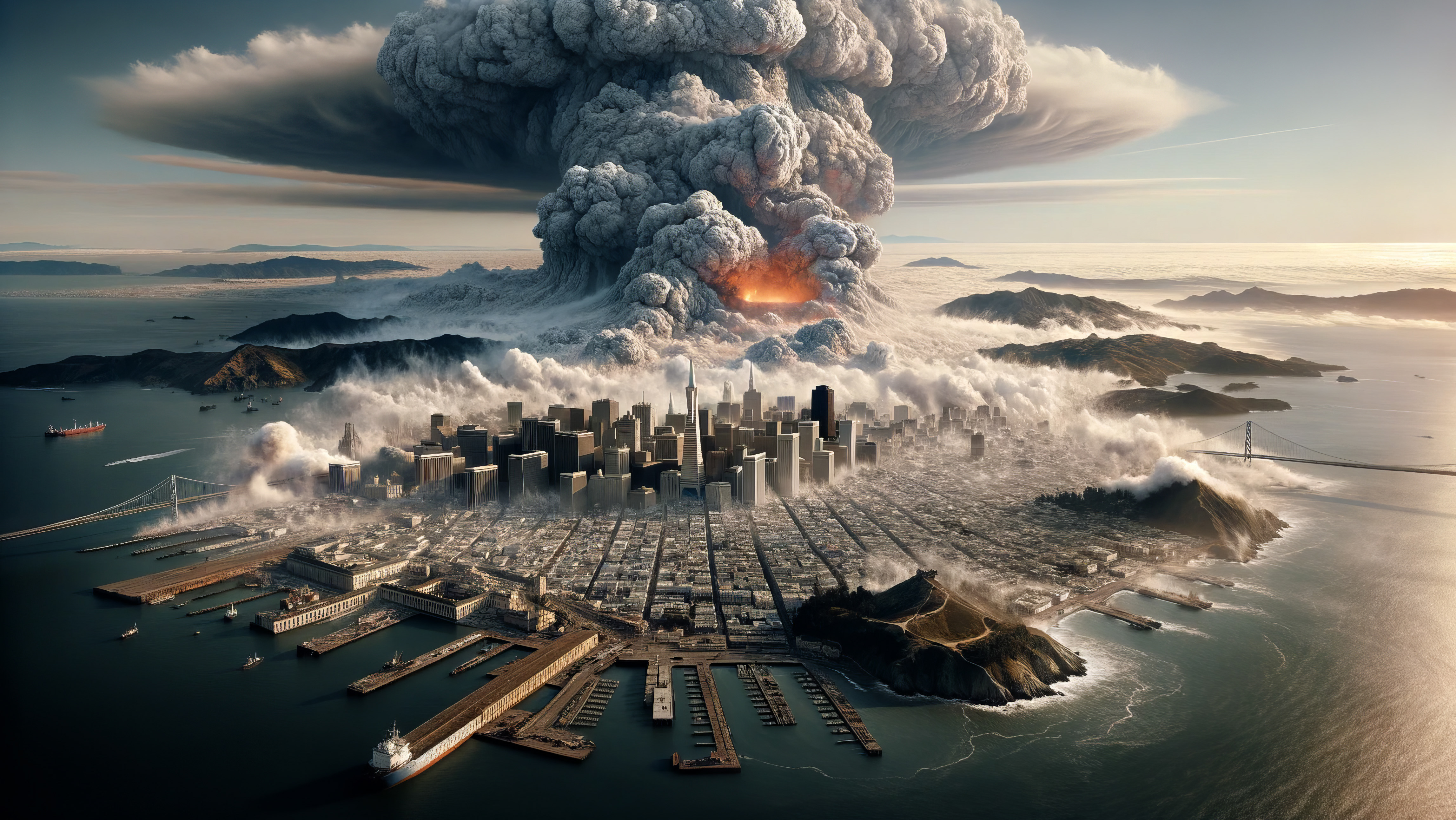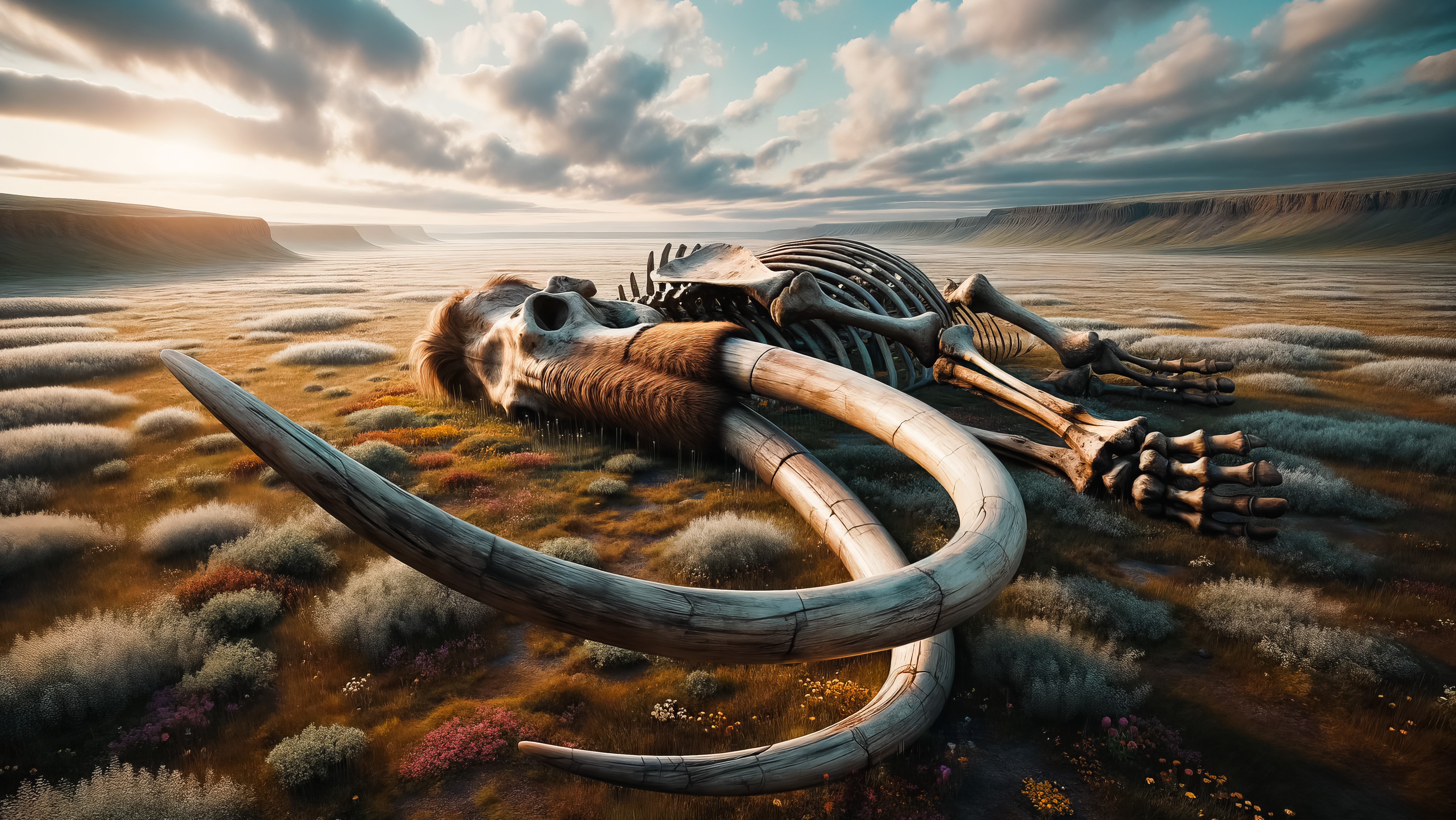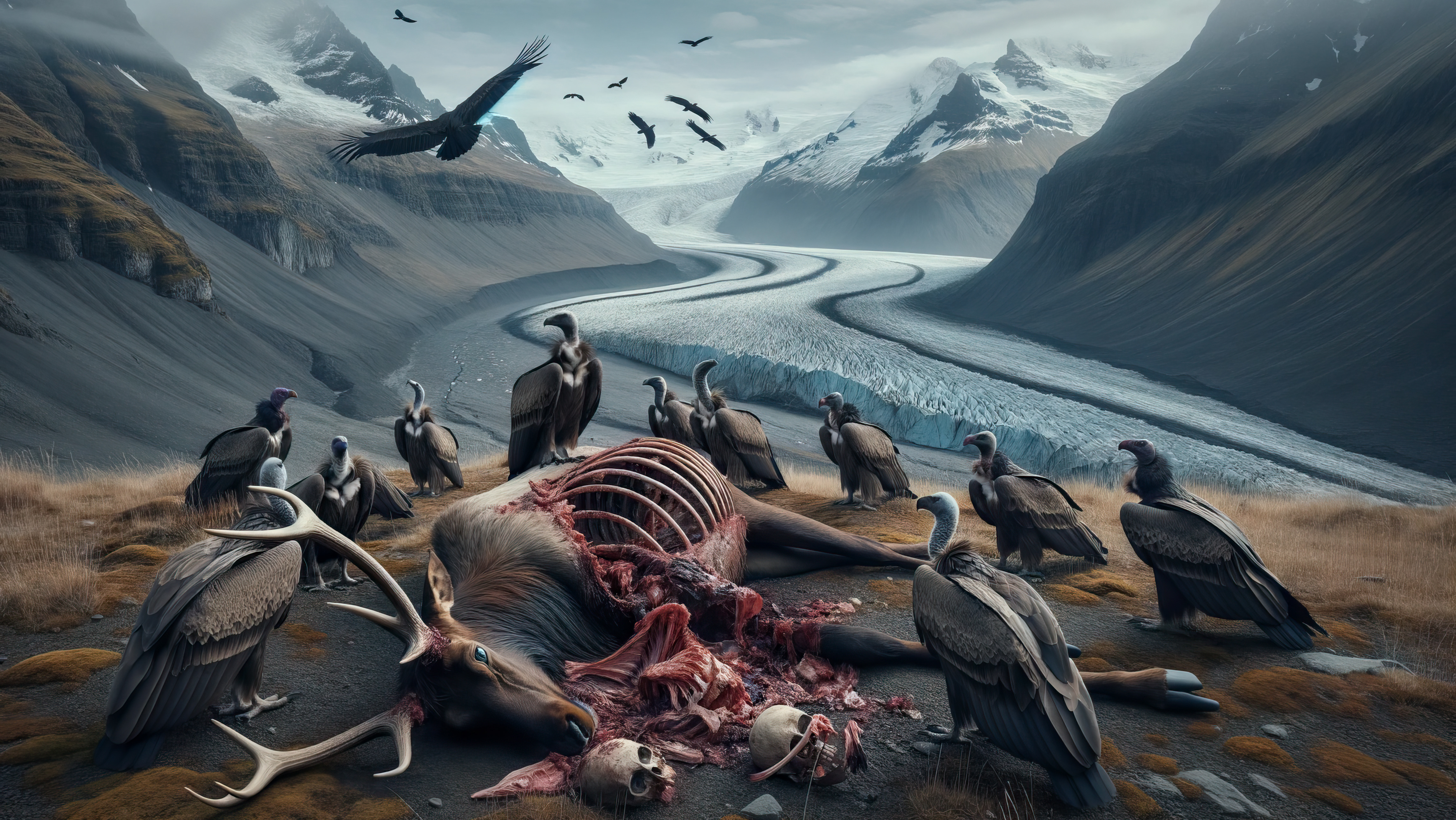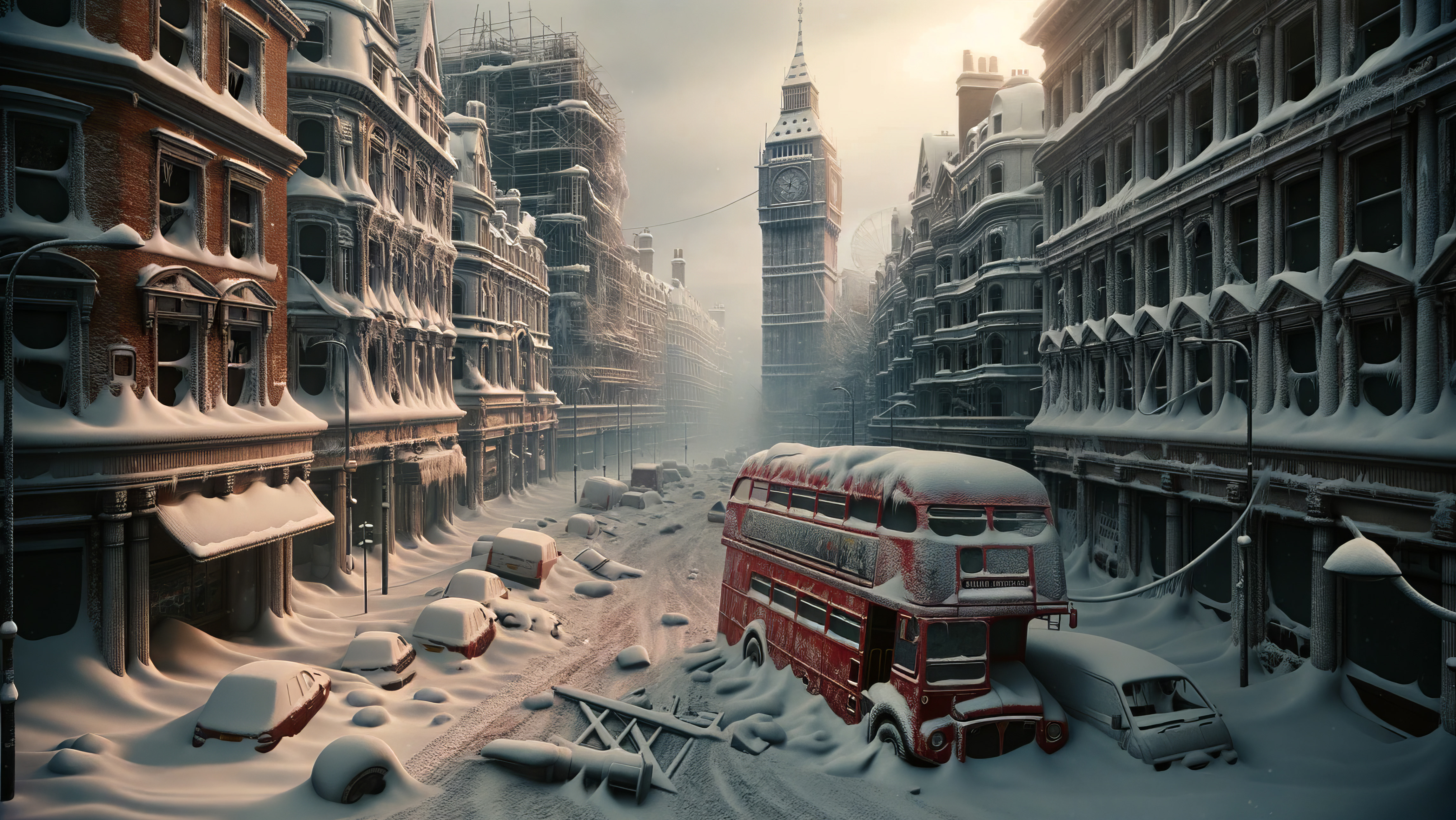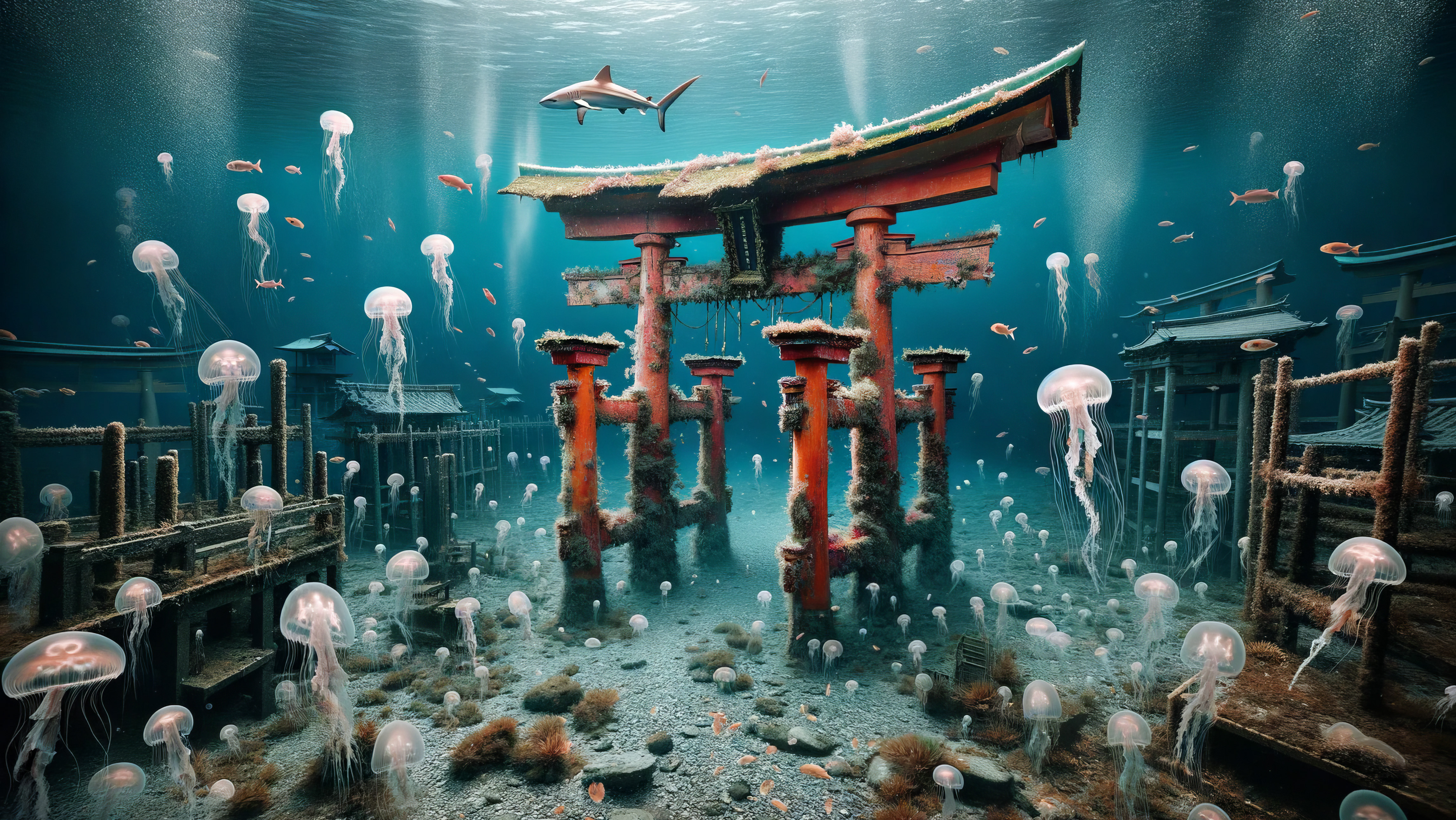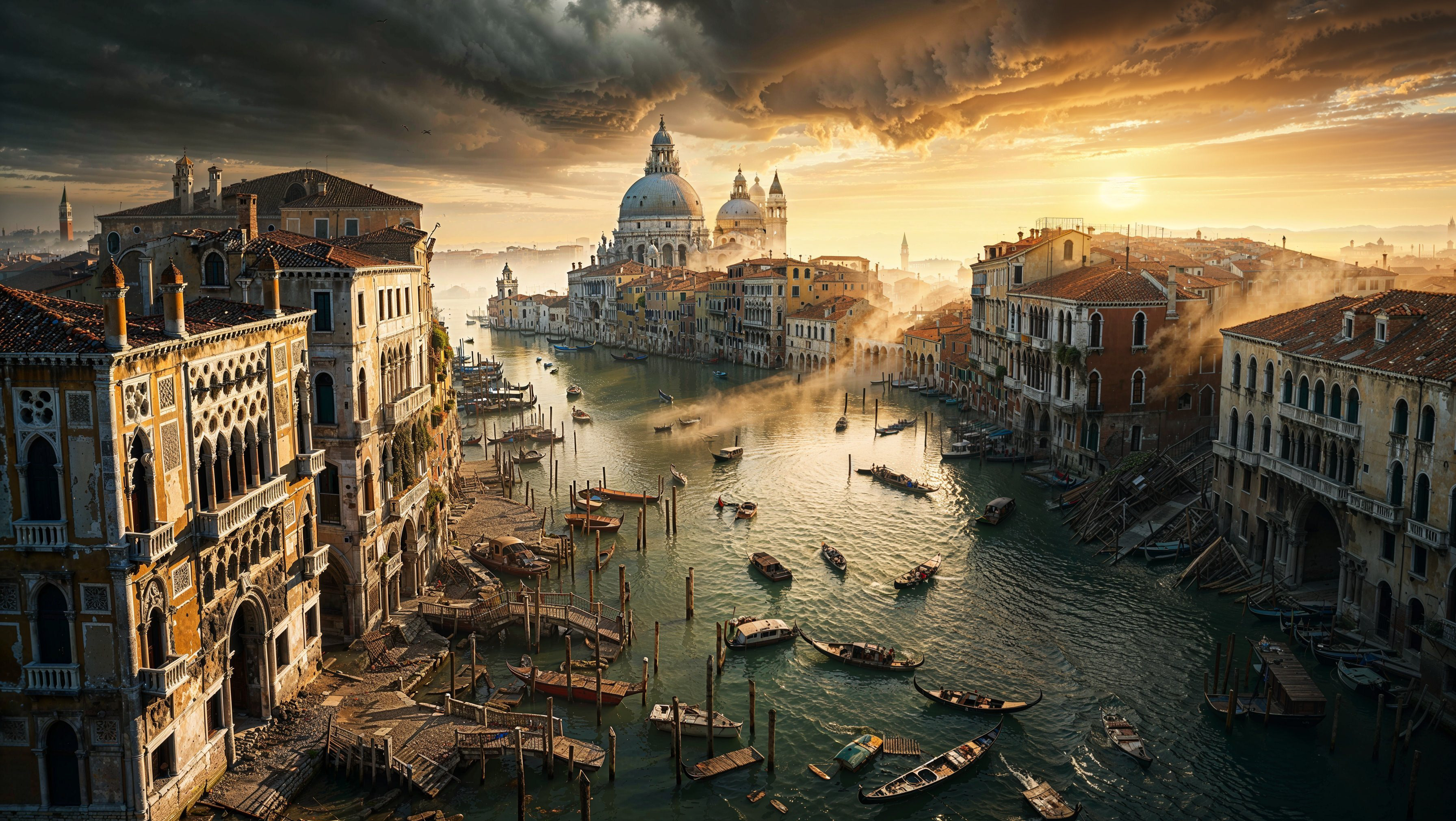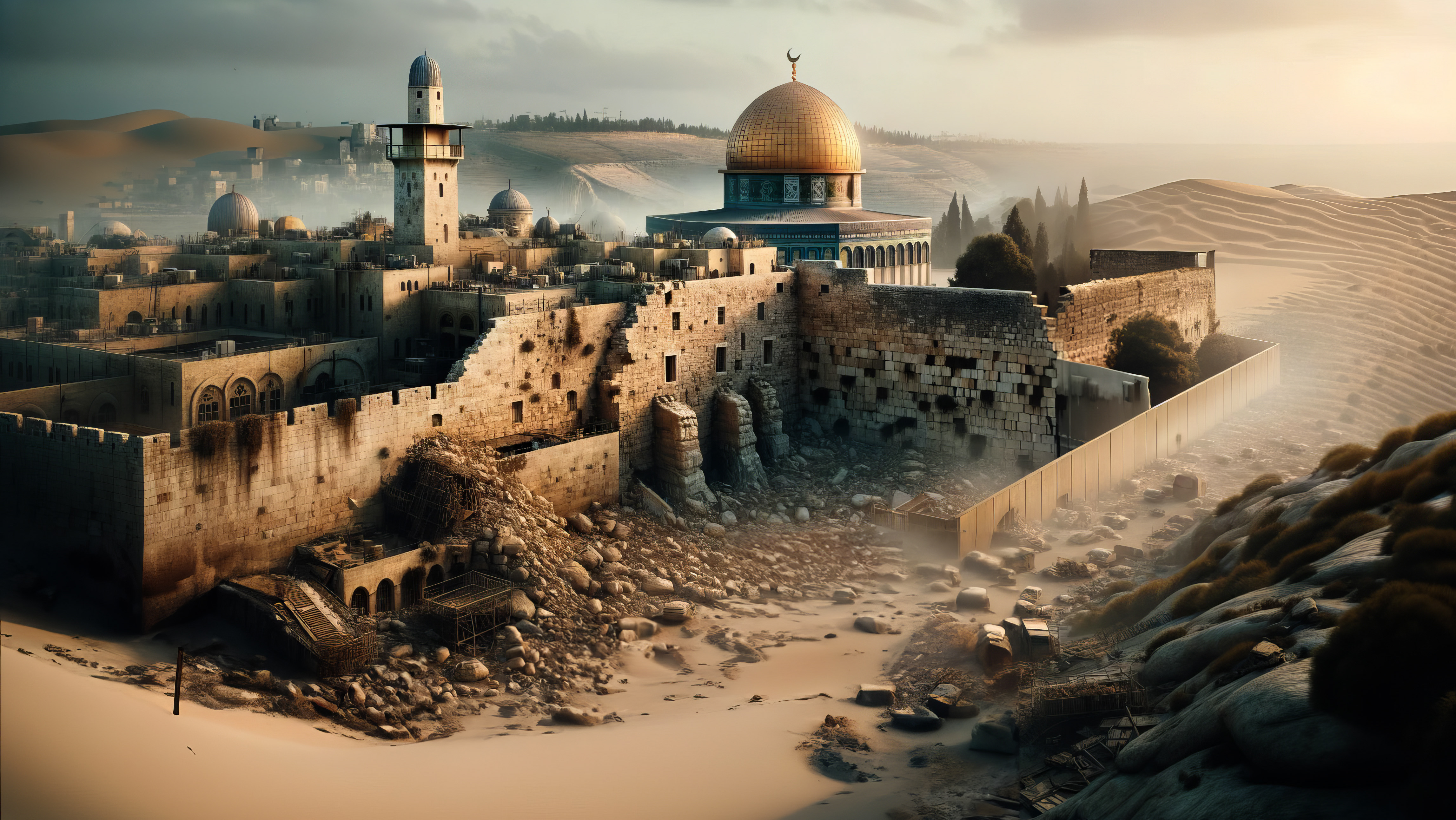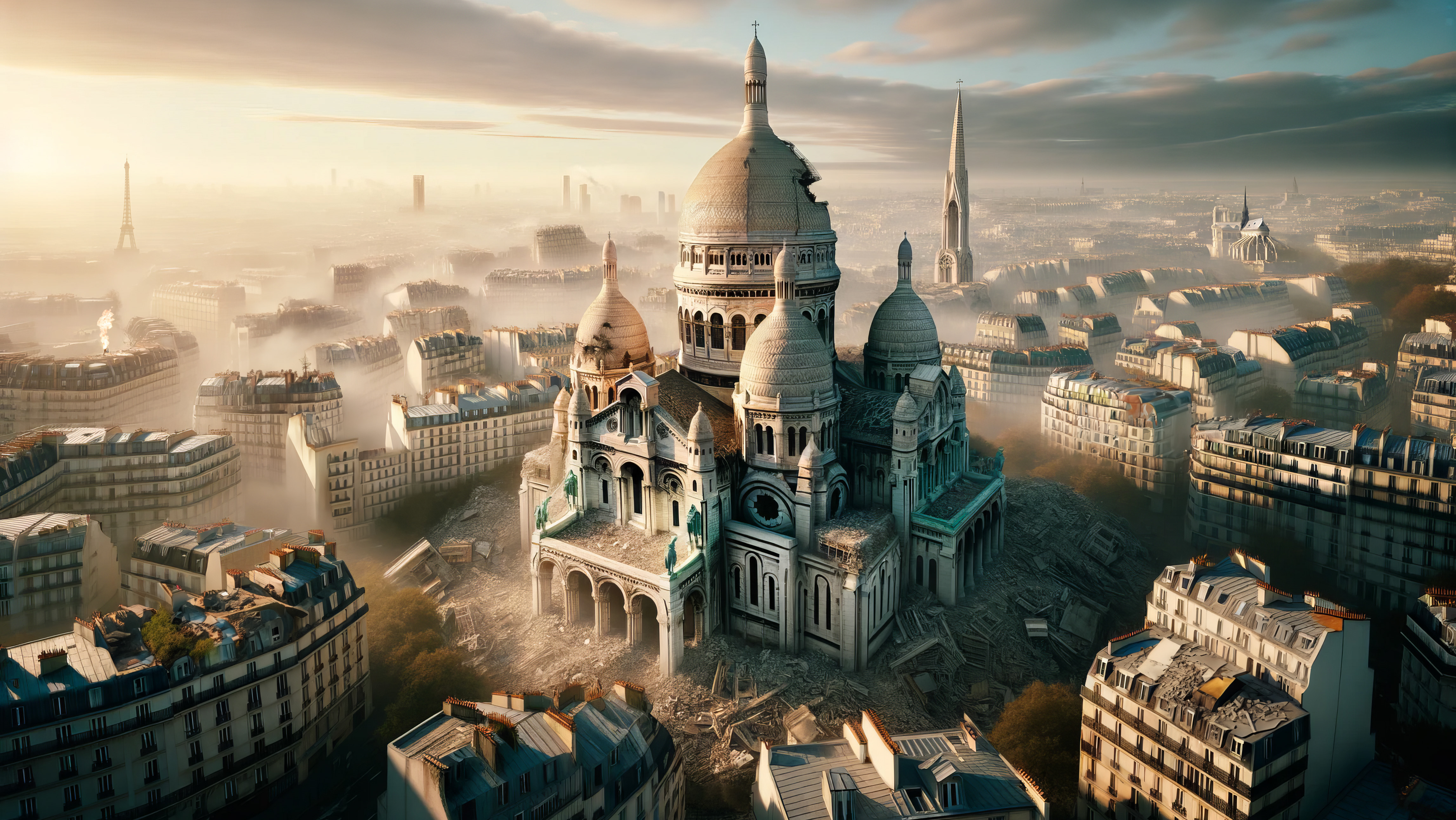Prelude to a Celestial Encounter
January 2061 A.D.
The world stood on the precipice of a celestial event that had been anticipated for decades. Halley's Comet, that ancient wanderer of the cosmos, was charting its course to pass by Earth once again. Its last appearance had been in the company of a bustling human civilisation, but this time, its audience was vastly different.
I had meticulously planned this expedition for years. With its pristine skies and untouched landscapes, Antarctica was the ideal vantage point for this cosmic rendezvous. Once a hub of scientific research and exploration, the continent now lay silent, its human inhabitants long gone. But its allure was undeniable, especially in the context of the comet's passage.
The preparations for the journey were extensive. The vessel, a marvel of temporal and spatial engineering, was equipped with the latest observational tools. Its sleek and translucent design was optimised for travel and study. The onboard systems were calibrated to capture every nuance of the comet's approach, from its luminescent tail to the icy nucleus.
As the departure date neared, a palpable excitement took hold. The significance of the event was twofold. Not only was it a chance to witness a celestial spectacle, but it also offered an opportunity to reflect on the passage of time, the cyclical nature of existence, and humanity's place in the grand tapestry of the universe.
A flurry of activity marked the early days month. Final checks, system calibrations, and route planning dominated the agenda. The goal was clear: to reach the Antarctic coast by mid-January, just in time for the comet's closest approach.
And so, with the vessel primed and the mission parameters set, the journey to the southernmost tip of the world began. As the vessel cut through the temporal waves, the anticipation grew. Antarctica beckoned with its frozen beauty and the promise-glow of the comet. The expedition of January 2061 was underway, a voyage into the past, with eyes firmly set on the heavens above.
Echoes of a Silent World
The comet's arrival was but a whisper in the vast chronicle of the time, yet its implications echoed loudly through the void. Unlike the celestial heralds of old, this one signified a different kind of obliteration. But before I could witness its ethereal dance, my path demanded a circumnavigation of the Antarctic coast, a sojourn across the Southern Ocean, and finally, a descent into the heart of the frozen landmass.
The questions that haunted my every step were manifold. My mission, though clear, bore the weight of epochs. The most pressing enigma of all: what sequence of events had culminated in the silent departure of humanity? I hoped that Antarctica, Earth's final untouched sanctuary, would unveil these truths.
Relics of Ambition
Antarctica, a realm of pristine desolation, stood as the planet's last testament. Once a beacon of hope amidst global chaos and environmental decay, it now bore the indelible marks of human ambition. My odyssey across this icy expanse unveiled haunting remnants of an era now lost to the annals of time: desolate research outposts, skeletal remnants of once-thriving metropolises, and artefacts entombed beneath layers of frost. These silent witnesses spoke of humanity's brief existence.
Yet, amidst this desolation, life endured. Seals lounged on glacial rafts, penguins waltzed along the shores, and the songs of whales filled the oceanic depths. These beings, moulded by the harshest climes, flourished where humanity had faltered.
Whispers of Wars Past
By the mid-2050s, whispers spoke of settlers seeking refuge on the islands encircling Antarctica. Were they remnants of a world torn apart by the Argentino-Chilean resource wars? Eco-visionaries? Dreamers yearning for a fresh dawn? The tales were as varied as poignant, painting a mosaic of humanity's final quest for sanctuary.
The Argentino-Chilean War of 2057 was a sad chapter in Earth's tale. A minor contention over newfound oil reserves off the Antarctic coast spiralled into a cataclysmic conflict. What commenced as mere border skirmishes soon consumed the continent in its fiery embrace. Like an insatiable blaze, the war left nought but devastation in its wake.
The siege of Santiago was its tragic crescendo. As Argentinian forces descended upon the city, its residents mounted a valiant defence. The streets echoed with cries of defiance and sorrow. Yet resistance, no matter how fervent, was ultimately quelled. Santiago's fall marked the end of an era. Yet, this conquest was a hollow victory in the grand tapestry of events. The world beyond was fragmenting, rendering such territorial triumphs moot.
The futility of the war mirrored children bickering over a cherished toy, only to shatter it in their zeal. Much like that toy, the world they once cherished lay in ruins.
The Dance of the Cosmos
As I journeyed deeper into the Antarctic expanse, the ethereal glow of the comet painted the horizon, casting a luminescent sheen over the ice. Its radiant tail, a streak of cosmic brilliance, seemed to beckon me, guiding my path through the desolation.
The mode of my travel was a marvel of temporal engineering, a vessel that moved not just through space but through time itself. It was a sleek, translucent craft, almost ephemeral in its design, powered by the very fabric of time. As it glided silently over the icy plains, it left no trace, no footprint. It was as if I was a ghost, a mere observer, untouched and untouchable by the world around me.
The landscapes that unfolded before me were breathtaking in their stark beauty. Vast plains of ice stretched to the horizon, interrupted only by jagged mountain ranges that pierced the sky. Like slow-moving rivers of ice, glaciers carved their way through the terrain; their ancient journey etched into every crevice and crack.
Yet, amidst this natural splendour, the remnants of humanity's touch were unmistakable. Once buzzing with activity, abandoned research stations now stood silent and sad. Their structures, though designed to withstand the harshest of conditions, showed signs of wear and decay. Once clear and bright, windows were now frosted over, hiding the secrets within.
As I approached one such station, I disembarked from my vessel, my feet crunching on the snow. The cold was biting, a sharp reminder of nature's dominance here. But my suit, another marvel of future technology, kept me insulated, allowing me to explore easily.
Inside the station, the remnants of human life were poignant. Desks strewn with papers, notes scribbled in haste, perhaps in the final moments before evacuation. A coffee mug, its contents long evaporated, sat next to a faded photograph of a family, their smiles starkly contrasting with the desolation. It was a haunting tableau, a snapshot of a moment frozen in time.
As I wandered through the corridors, I thought of the people who once inhabited this place. Who were they? What dreams and aspirations did they hold? What fears and anxieties plagued them in this remote corner of the world? And ultimately, what led to their departure, their exodus from this last refuge?
The comet, ever-present in the sky, seemed to hold some of the answers. Though beautiful, its arrival was also a harbinger of change and upheaval. Did its appearance have a role to play in humanity's end? Or was it merely a spectator, like me, to the unfolding drama below?
The weight of these thoughts pressed upon me as I continued my exploration. Each abandoned outpost, each forsaken city, told a story. It was a story of ambition and hubris, love and loss, of a species that reached for the stars but was ultimately consumed by its own inner demons.
Nature's Resilience
Yet, amidst the ruins, there was also hope. Nature, in its infinite wisdom, was reclaiming its dominion. Penguins nested in abandoned buildings, seals lounged on deserted docks, and the air was filled with the songs of birds returning to their ancestral homes. And overhead, albatrosses soared gracefully, their wings spanning the sky.
A realisation dawned upon me as I stood on a cliff overlooking the vast ocean, the comet's reflection shimmering in the waters below. Humanity, in all its glory and folly, was but a brief chapter in the Earth's long saga. And while their time had passed, their legacy, the wonders and the warnings would endure.
In the echoes of their achievements and the shadows of their mistakes, I found a lesson that transcended time and space. A statement of resilience, the indomitable spirit of life, and the delicate balance between creation and destruction.
With the comet as my guide and the memories of a lost world in my heart, I continued my journey, seeking more answers, understanding, and, perhaps, a glimpse of redemption for a species that once was.
The vastness of Antarctica stretched before me, a canvas of white punctuated by the deep blues of the ocean and the stark blacks of exposed rock. As my vessel glided effortlessly over the landscape, I was drawn to the colossal icebergs that dotted the seascape. Each was a masterpiece, sculpted by time and the elements, their surfaces etched with patterns that told of their ancient origins and long journeys.
The Frozen Fleet
As I approached one particularly massive iceberg, I noticed something unexpected: the rusted hull of a ship, its bow embedded deep within the ice. The vessel, once a symbol of human exploration and ambition, now lay abandoned and forgotten, its purpose and crew lost to the annals of time. Nearby, other ships floated eerily, some broken and fragmented, their shattered pieces scattered across the icy waters, while others seemed merely frozen in place as if time had stopped at the very moment of their abandonment.
Aurora's Embrace
The ethereal glow of the aurora painted the sky in hues of green and pink, its shimmering curtains of light dancing gracefully above. The beauty of the phenomenon was breathtaking, a stark contrast to the desolation below. It was as if the heavens were putting on a show, a reminder of the universe's grandeur and mystery.
Guided by the aurora's light, I ventured further inland, where the remnants of human settlements lay scattered across the landscape. The first was a small outpost; its buildings collapsed and covered in snow. Broken equipment littered the ground, and a once-bright flag, now faded and torn, fluttered weakly in the wind.
Uncharted Discoveries
Further on, I came across the wreckage of a helicopter, its rotors bent and twisted, a testament to the harshness of the environment and the challenges faced by those who dared to explore it. Nearby, crates of supplies lay strewn about, their contents long since stolen by the elements and wildlife.
Each settlement I visited told a similar story: of ambition and hope, of challenges faced and sometimes overcome, and ultimately, of abandonment and decay. The silence was deafening, broken only by the howling of the wind and the distant cries of seabirds.
As I continued my journey, I couldn't help but reflect on the dichotomy of the scene before me. On the one hand, the remnants of humanity's presence spoke of failure, of dreams unfulfilled and ambitions thwarted. On the other, the resilience of nature, its ability to adapt and thrive even in the harshest conditions, offered a glimmer of hope.
Perhaps, in the end, that was the true lesson of my journey: that while civilisations may rise and fall, life, in all its myriad forms, will always find a way. And as I gazed upon the desolate beauty of Antarctica, with the comet's glow illuminating the horizon and the aurora's light dancing above, I felt a profound sense of connection, a realisation that in the grand tapestry of the universe, we are all but fleeting moments, and yet, each moment is precious and worth cherishing.
As days turned into nights and nights back into days, the ever-present glow of the comet became more pronounced. Halley's Comet, a celestial wanderer that had graced Earth's skies for millennia, was making one of its periodic visits. This time, however, its appearance was different. Without the light pollution of human civilisation, the comet shone with unparalleled brilliance against the backdrop of the Antarctic night.
Halley's Legacy
Halley's Comet, named after the English astronomer Edmond Halley who first predicted its return, had always been a harbinger of change, of new beginnings and ends. Its long, glowing tail, composed of ice and dust particles, stretched across the sky, creating a mesmerising spectacle. The nucleus, a dark, icy core, was visible, reflecting the sun's light and illuminating cosmic dust.
Drawing closer to the comet's path, I anchored my vessel on a plateau that offered an unobstructed view—the icy ground beneath crunched as I set up my observation equipment. Through the high-resolution lens, the details of the comet were even more astonishing. Jets of gas spewed from its surface, creating a dynamic, ever-changing aura. These geysers resulted from the sun's warmth heating the comet's icy body, causing it to release gas and dust in a spectacular display.
As I observed, I pondered the significance of this celestial body in human history. Halley's Comet had been a constant, appearing every 76 years, and had been documented by various civilisations. It had been seen as an omen, a sign from the gods, and celebrated and feared in equal measure. Ancient tapestries, paintings, and texts bore witness to its appearances, capturing the awe and wonder they inspired.
In the silence of the Antarctic night, with only the comet for company, I felt an overwhelming sense of continuity. There was a link, a bridge between the past, present, and future. This very comet had been observed by the likes of Genghis Khan, Mark Twain, and countless others. It witnessed empires' rise and fall, the birth of new nations, and humanity's innumerable triumphs and tragedies.
And now, in a world devoid of humans, it served as a poignant reminder of the transient nature of existence. The comet, with its cyclical journey, symbolised the ebb and flow of life. Civilisations might rise and fall, and species might come and go, but the universe continued unabated with its celestial dance.
I spent hours, which felt like moments, watching the comet. Its ethereal beauty, combined with the desolate Antarctic landscape, created a scene of haunting magnificence. As dawn approached and the first rays of sunlight began to pierce the horizon, Halley's Comet slowly faded from view, its glow dimming against the brightening sky.
With a heavy heart, I packed up my equipment, knowing that this might be the last time anyone would witness the comet in such pristine conditions. But as I resumed my journey, the night's lessons stayed with me. In the grand cosmic ballet, everything had its moment, its time to shine. And while humanity's dance might have ended, the universe continued its eternal waltz, with comets, stars, and galaxies taking turns in the spotlight.
Echoes of Settlements Past
As I ventured further into the Antarctic wilderness, the stark contrast between the remnants of human civilisation and the thriving natural world became increasingly evident. The once-bustling research stations and settlements, now silent and desolate, stood as sad reminders of humanity's fleeting presence. Yet, amid this void, life persisted and flourished.
Once dotted with human outposts, the Antarctic coastlines were now teeming with wildlife. Emperor penguins congregated in large colonies, their distinctive calls echoing across the icy plains. Their fluffy and curious chicks waddled about, exploring their frigid world with wide-eyed wonder. Seals basked on the shores, their sleek bodies glistening in the sun, while pods of orcas and humpback whales breached the ocean's surface, their majestic forms momentarily silhouetted against the horizon.
Inland, the vast icy deserts, seemingly barren at first glance, revealed much life upon closer inspection. Tiny krill swarmed beneath the ice, forming the base of a complex food web that sustained everything from fish to the mighty blue whale. Snow petrels soared overhead, their white plumage contrasting starkly against the blue sky, while skuas patrolled the ground, ever watchful for an unguarded penguin egg.
As I observed this vibrant ecosystem, a profound realisation dawned upon me. While humanity's chapter on Earth had ended, the story of life continued unabated. The resilience of nature, its ability to adapt and thrive even in the harshest conditions, was a testament to the indomitable spirit of life.
Each day brought discoveries. One morning, I stumbled upon a hidden valley sheltered from the biting winds. Here, a microclimate had formed, allowing mosses and lichens to carpet the ground in a tapestry of green. Tiny insects buzzed about, and freshwater streams, fed by melting glaciers, were teeming with microscopic life.
Yet, amidst this abundance, there were also reminders of humanity's impact. Plastic debris, remnants of a bygone era, littered the shores, entangled with kelp and driftwood. Abandoned fishing nets, now ghostly traps, ensnared unsuspecting marine life. Though slowly being reclaimed by nature, these artefacts served as poignant reminders of the delicate balance between creation and destruction.
Epilogue - Whispers in the Wind
As days turned into weeks, my journey became a meditative exploration, a quest for understanding and connection. The absence of humans, rather than creating a void, had amplified the voices of the natural world. The songs of birds, the calls of whales, the rustling of the wind – all these sounds formed a symphony, a celebration of life's tenacity and diversity.
In this post-human world, Antarctica stood as a beacon of hope, a testament to the enduring power of nature. And as I continued my voyage, with the memories of a lost civilisation in the backdrop, I was filled with reverence and wonder. For in the dance of life, every ending is but a new beginning, and Earth's story continues to unfold with all its twists and turns.
